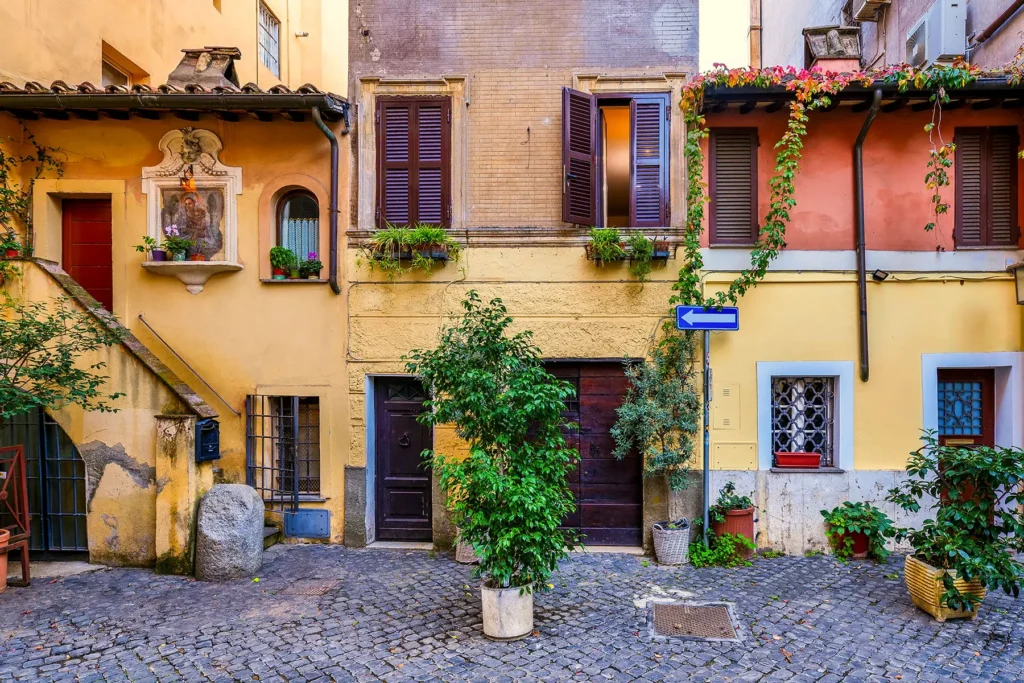Macro Trends in Italian Real Estate (2020–2030)
Before diving into the cities, here are key factors fueling Italy’s property market shift beyond Milan and Rome:
- Remote Work Migration: Professionals are leaving large cities for coastal or mid-sized towns with better quality of life and lower costs.
- Superbonus 110% (2020–2025): Government tax credit program for energy-efficient renovations spurred redevelopment in many regions.
- Tourism Recovery: Short-term rental demand is rising again post-COVID, especially in less saturated cities.
- Foreign Investment Surge: Americans, Germans, and Northern Europeans are increasingly buying second homes in Italy due to favorable exchange rates and lifestyle appeal.
- Digital Nomad Visas & Remote Worker Laws: Italy is rolling out visa options that encourage relocation to smaller cities and towns.

The 5 Italian Cities Leading the 2020–2030 Real Estate Boom
1. Bologna – Italy’s Most Balanced Investment
Why It’s Booming:
- Home to Europe’s oldest university, Bologna has a youthful, educated population and consistent rental demand.
- It’s strategically located between Milan, Florence, and Venice—ideal for commuters and businesses.
- The city is undergoing major upgrades in infrastructure and green urban planning.
Investor Insight:
- Between 2020 and 2024, property values rose 25–30%.
- Yields are stable (3.5–5%), with strong student housing and short-term rental markets.
- Neighborhoods like San Donato and Navile are popular for value investors.
2. Bari – The Southern Star with Northern Ambition
Why It’s Booming:
- Bari is becoming the capital of Southern Italy’s digital transformation, with startups and tech investments flowing in.
- Its modernized port, airport, and university make it a hub for logistics, trade, and education.
- The cost of living is low, but the lifestyle is high quality—beaches, seafood, and walkable city centers.
Investor Insight:
- Property prices remain below €2,500/m² in many neighborhoods, yet growing fast (15–20% increase since 2020).
- Short-term vacation rentals are rising, especially in the Old Town and Murat District.
- Strong government incentives for historic property restoration.
3. Trieste – Italy’s Gateway to Central Europe
Why It’s Booming:
- A cultural and economic bridge between Italy, Austria, and Slovenia.
- A hotspot for scientific research, international trade, and shipping (Italy’s 2nd-largest port).
- Low property prices but high quality of life.
Investor Insight:
- Strong yields (5–6%) due to relatively low purchase prices and increasing international demand.
- Redevelopment of the Porto Vecchio (Old Port) area is transforming Trieste’s urban landscape.
- Ideal for long-term appreciation and multi-family housing investors.
4. Palermo – The Comeback Capital of the Mediterranean
Why It’s Booming:
- Palermo is emerging from decades of underinvestment with a wave of public-private projects.
- The city is becoming a hotspot for digital nomads due to its affordability and charm.
- Major increases in foreign ownership since 2020, especially from Northern Europe and the US.
Investor Insight:
- Property prices have risen 20–25% since 2020 in key districts like Politeama and Mondello.
- Renovated historic apartments in the Old Town are seeing high ROI via Airbnb.
- Palermo’s transformation is still early—ground-floor opportunity for patient investors.
5. Turin (Torino) – Italy’s Quiet Tech Powerhouse
Why It’s Booming:
- The former capital of Italy is quietly becoming a tech and innovation hub, with a strong industrial base transitioning into smart manufacturing and AI.
- It’s also one of Italy’s most important student cities, with major universities and research centers.
- Urban regeneration projects are revitalizing the city’s real estate.
Investor Insight:
- Property values have increased 15–20% since 2020, with San Salvario, Aurora, and Crocetta leading.
- Great city for co-living, student rentals, and mid-term furnished apartments.
- Yields in specific neighborhoods can reach 6%+, especially for furnished units near universities.
Comparative Snapshot
| City | Growth Drivers | Yield Potential | Risk Profile |
|---|---|---|---|
| Bologna | Education, tech, location | 3.5–5% | Low |
| Bari | Digital, tourism, logistics | 4–6% | Medium |
| Trieste | Port, science, EU access | 5–6% | Medium |
| Palermo | Urban revival, tourism | 4–7% | High |
| Turin | Industry, students, innovation | 4–6% | Low-Medium |
What’s Fueling the Italian Boom?
- Affordable Entry Points: Compared to Spain and France, many Italian cities are still undervalued.
- Renovation Opportunities: Italy’s historic housing stock means investors can add value through renovation.
- Quality of Life Migration: Millennials, families, and digital nomads are choosing “liveable cities” over crowded metros.
- Government Incentives: From the Superbonus to first-home buyer programs, Italy is investing in housing.
Who Should Invest in Which City?
| Investor Type | Best City | Why |
|---|---|---|
| First-Time Investor | Bari or Palermo | Low cost, strong upside |
| Digital Nomad | Palermo or Trieste | Lifestyle + demand for short lets |
| Yield-Focused | Trieste or Turin | Higher return with stable market |
| Renovation Buyer | Palermo or Bari | Old-town homes with upside |
| Institutional | Bologna or Turin | Liquidity and urban development |

Leave a Reply